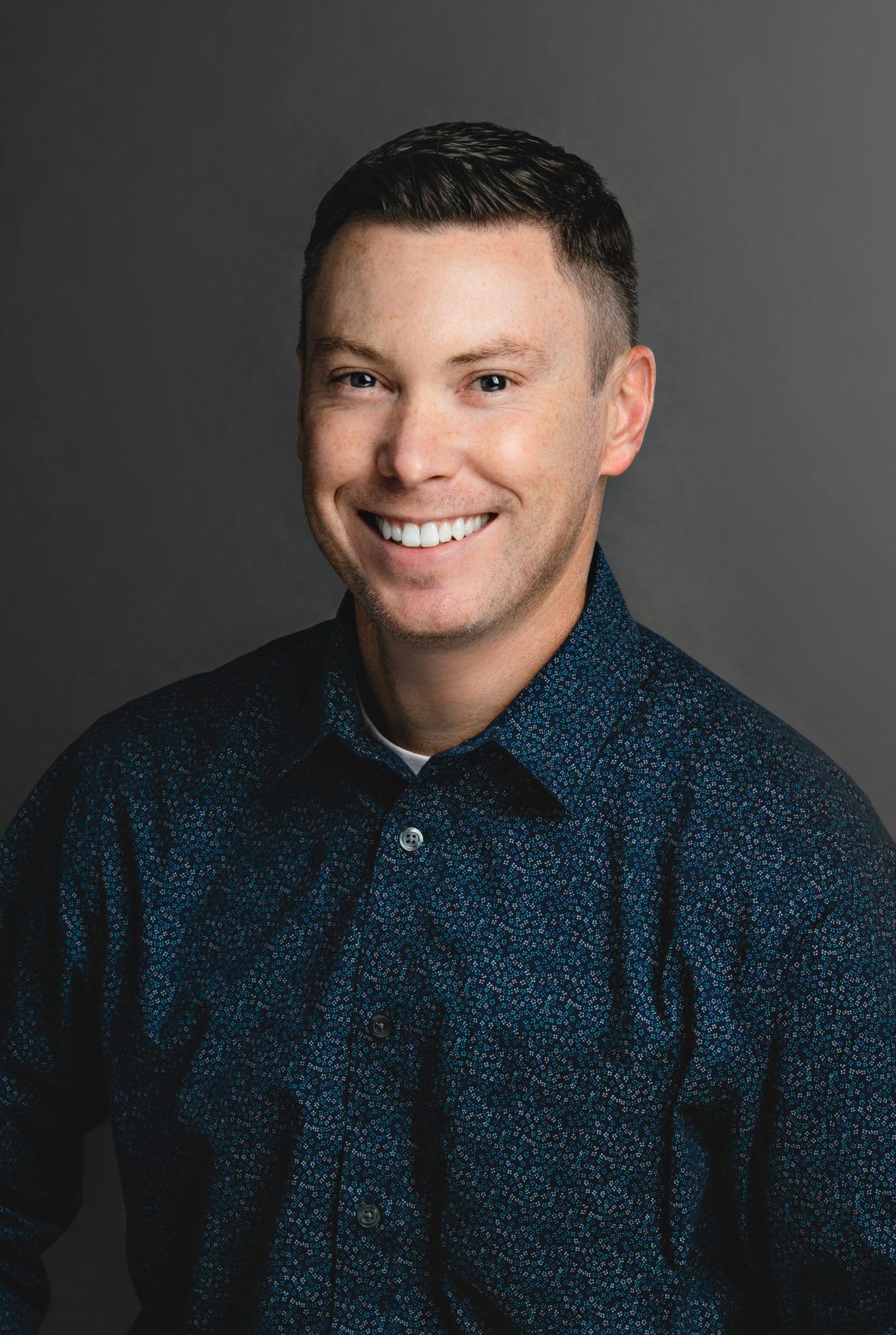Get to Know Your Founding Advisors at Five Pine Wealth Management
By the Five Pine Wealth Management Team

Since 2017, the team at Five Pine Wealth Management has had the great pleasure of serving a diverse group of clients, and we have loved every minute of it. To celebrate six years in business, we’d like to share our stories with you in the hope that you will get to know us even better than you already do.
As you might know, cofounders Ben and Jeremy met in 2016. After working with a large financial advisory team for a couple of years, they decided they wanted to focus on being fee-only fiduciaries and holistic financial planners. So they branched into the world of entrepreneurship and began Five Pine Wealth Management. Ever since, they’ve worked hard to develop a relationship-centric culture for themselves, their team, and their clients so that going to work every day no longer feels like work at all.
Get to Know Jeremy
In 1998, Jeremy escaped the dry, hot Mojave Desert to pursue an education in Managerial Economics at Oregon State University. While there, he also earned an MBA in Wealth Management. And once he got a taste of the green, cool Pacific Northwest, Jeremy knew he wasn’t returning to the sunny Southwest. After graduation, he settled in Coeur d’Alene, Idaho where he later met Ben Holzhauser.
An avid fisherman, Jeremy spends many a weekend fishing the lakes and rivers of Northern Idaho. He also enjoys dual sport motorcycle riding in the woods, spending time with his friends and family, and reading every book about Bitcoin he can get his hands on. A few of his favorites include The Bitcoin Standard by Saifedean Ammous and Inventing Bitcoin by Yan Pritzker.
Why Jeremy Became a Financial Advisor
Jeremy is a natural-born problem-solver, and no career field offers more genuine problems that need solving than financial services. As a financial advisor, Jeremy gets to use his problem-solving skills every day to help his clients tackle challenges that have a real impact on the quality of life they get to enjoy in the present and the future.
Jeremy knew he didn’t want a job with a checklist or a routine set of tasks, and he loves that no client situation is quite like another. Helping people learn to make better financial decisions and meet their financial goals provides him with the utmost satisfaction.
Jeremy respects that his input can have a long-lasting, deeply meaningful impact on the lives of his clients. He knows how important it is that they get the financial planning aspect “right” if they’re to live the lives they want. And he is humbled by the fact that his guidance may have generational effects on his clients and their heirs for decades to come.
On a personal level, being a financial advisor gives Jeremy the autonomy he desires in a career. He loves being able to set his own schedule and having the freedom to choose who he works with—and he believes he gets to work with the best people in the world! His clients become friends, so his job doesn’t seem like work to him at all.
Jeremy’s Wealth Management Specialties
Jeremy specializes in holistic financial planning and wealth management, including insurance planning, estate planning, retirement planning, and investment management. He believes that each area is a critical component of a solid financial foundation.
Jeremy considers himself a Bitcoin maximalist (only Bitcoin, not cryptocurrency as a whole) and understands the space more than most financial advisors. While he doesn’t make purchase recommendations, Jeremy educates his clients on ways to include Bitcoin in their financial and estate planning. He believes that Bitcoin can be used to leave heirs a lasting legacy in the face of inflation and currency debasement.
Get to Know Ben
Before Ben and his beautiful wife, Rachael, had their daughter Evelyn in the summer of 2022, Ben enjoyed traveling across the US (he has been to 47 states) as well as worldwide (more than 20 countries). He comes from a long line of Idahoans: Ben’s grandparents and great-grandparents lived near Priest River, Idaho going back to the 1960s. Today Ben, Rachael, and Evelyn call Coeur d’Alene home.
After earning his Bachelor of Arts degree from the University of California in Riverside, Ben pursued a Master of Science degree from the University of Edinburgh in Scotland. Once he finished grad school, Ben worked in compliance and national accounts for a broker-dealer and various investment products.
Ben is an avid reader and is passionate about various eras of world history. As a student at the University of Edinburgh, he founded the Historical Society for the Second World War. When Ben is not working, he enjoys early morning runs, spending time with his wife and daughter, bowling with a Sunday night league, working on his 100-year-old home, and volunteering for various organizations.
In the past five years, Ben has been President of the Coeur d’Alene Evening Rotary, Treasurer (x3) of Coeur d’Alene Evening Rotary, Head Trustee of Coeur d’Alene Eagles, President of Early Birds Bowling League, and winner of the “Kootenai County Top 30 Under 40” award.
Why Ben became a financial advisor
Ben has a diverse background in financial services and spent 12 years working in various real estate investing and private equity roles. While this experience was highly educational, too often Ben would meet with financial advisors that sold expensive products to their clients while neglecting to understand their client’s goals behind investing.
He commonly experienced financial representatives acting like sales agents, rather than taking the time to understand their clients’ needs and help them achieve their financial goals while taking into consideration fees, tax planning, and more.
Seeing how so many advisors ran their practice, Ben realized that he could make a greater impact by helping individuals, families, and businesses achieve their financial goals as a fiduciary and fee-only financial planner.
As a holistic financial planner, Ben gets to do more of what he loves, which is focusing on the relationship-centric aspects of wealth management. He has a high regard for his clients’ unique visions and enjoys helping them find creative solutions to their problems over the course of a long-term professional relationship.
Ben’s wealth management specialties
Holistic financial planning allows Ben to pursue two of his interests alongside one another: living a healthy lifestyle and solving the puzzles of personal finance. He approaches wealth management from a whole life perspective to go beyond the numbers.
Rather than setting arbitrary financial goals, Ben helps his clients consider their vision for the future alongside their health and lifestyle choices to craft a truly custom financial plan. From there, they consider how long a nest egg will need to last based on how active and healthy an individual client might be, as many people are finding they will be retired for 30+ years.
Ben also helps his clients visualize how they will spend their time in retirement, as the emotional transition can oftentimes be just as challenging—if not more so—than the financial transition. As his clients prepare to go from working full-time to full-time leisure, he encourages them to think of low-cost yet enjoyable day-to-day activities that will allow more flexibility for higher-cost, more infrequent pleasures like traveling.
Ben and Jeremy’s Shared Philosophies
Ben and Jeremy both believe strongly in the value of education. One of their favorite parts of their job is educating clients about personal finance choices and strategies they’d never before considered. In Jeremy’s words, watching clients have that ‘aha’ moment is one of the most rewarding parts of being a financial advisor.
Since Ben and Jeremy are younger than many advisors, they’re more knowledgeable in modern areas of personal finance that are highly relevant to today’s wealth management strategies, such as incorporating Bitcoin and other alternative assets into diversified portfolios.
Ben and Jeremy are often opposed to using actively managed and potentially tax-inefficient mutual funds. Rather, they advocate passive investing strategies and believe in using low-cost ETFs, mutual funds, and indexing strategies to help their clients keep more of their money.
At their core, Jeremy and Ben believe that every client presents a unique set of challenges and opportunities depending on their life situation, goals, and time horizon. And as wealth strategists who truly create value for their clients, they know there are no cookie-cutter approaches to financial planning.
Instead, they believe that high-caliber wealth strategists need to develop long-term, meaningful relationships with their clients. They prioritize regular communication to build trust and become a dependable resource for the individuals, families, and business owners they work with.
Join the Family at Five Pine Wealth Management
At Five Pine Wealth Management , we pride ourselves on the fiduciary care we show our clients, as well as the personal relationships we’ve developed with every family we work with. If you have friends or family that you think would benefit from working with us, we would be honored to connect with them. Have them give us a call at 877.333.1015, email us at info@fivepinewealth.com , or visit our website to learn more about what it’s like to work with us.
The post Get to Know Your Founding Advisors at Five Pine Wealth Management appeared first on Five Pine Wealth Management.
Join Our Newsletter
Your monthly dose of financial planning insights and updates.




